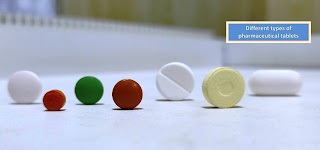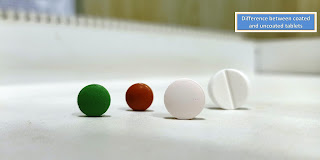Different types of tablets are formulated by the pharmaceutical industry, according to the route of administration and function. They can be different in size, weight, shape, thickness, hardness, disintegration and dissolution characteristics, and other features based on their amount of medicinal substances, intended use, and process of preparation.
The dosage form is a pharmaceutical formulation in which a particular mixture of active pharmaceutical ingredients (APIs) and excipients are used to allow simple and precise administration and delivery of active drug substances. Generally, it is classified based on the physical state, route of administration, site of application, and uses.
The tablet type of oral solid dosage form and is one of the most preferred compared to another form of medicine because it offers several applications and advantages to patients, physicians, and manufacturers. A tablet contains a mixture of active pharmaceutical ingredients (API/drug) and excipients, typically in powder form which is compressed to form a solid pill.
The pharmaceutical tablets can be either coated or uncoated and are classified into five groups based on the route of administration and action.
1. Tablets ingested orally:
- Compressed tablets
- Multiple-compressed tablets
- Sustained action tablets
- Enteric-coated tablets
- Film-coated tablets
- Sugarcoated tablets
- Gelatin-coated tablet
- Chewable tablets
2. Tablets used in the oral cavity: -
- Sublingual tablets
- Buccal tablets
- Dental cones
- Lozenges tablets and torches
3. Tablets administered by other routes: -
- Implantation tablets
- Rectal tablet
- Vaginal tablets
- Hypodermic tablet
4. Tablets used to prepare solutions: -
- Effervescent tablets
5. Molded tablets or tablet triturates: -
- Dispensing tablets
- Hypodermic tablets
Commonly asked questions on pharmaceutical dosage forms are as follows.
What are the disadvantages of tablets?
The major disadvantage of the tablet dosage form is that It may be complex or unfeasible to formulate drugs with slow dissolution, poor wetting, and intermediate to large dosages, as a tablet offering sufficient or maximum bioavailability of the medication.
What are the types of capsules in pharmaceuticals?
There are two types of capsules, hard-shelled capsules, and soft-shelled capsules, hard-shelled capsules containing dry, powdered materials, and soft-shelled capsules, containing drugs that are dissolved or suspended in oil.
Why are tablets coated?
The tablet coating is specifically intended for taste masking, odor masking, physical and chemical protection, and to control the rate or speed of dissolution of the tablet.
What are the factors affecting the granulation process?
Quality of the machine, compatibility between material and binding solvents, selection of excipients, solubility of particles in the granulation liquid, and characteristics of the drug are some of the factors that affect the granulation process.
You may also like this

